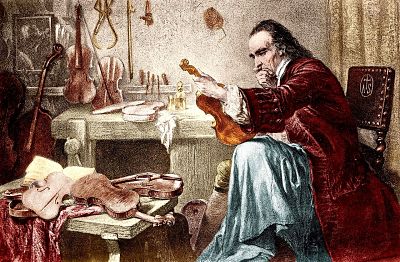 I could not stop listening. The instrument, the program said, was a Stradivarius from 1699 and the music was Prokofiev, the man who saw the nineteenth century commit suicide and watched the twentieth century commit genocide.
I could not stop listening. The instrument, the program said, was a Stradivarius from 1699 and the music was Prokofiev, the man who saw the nineteenth century commit suicide and watched the twentieth century commit genocide.
I was there in the twenty-first century listening to the sublime Houston Symphony work with an animated Gil Shaham, a man who plays violin and looks like he plays the fiddle. The man enjoys his work and makes you enjoy it too.
All the effort that was required to produce the explosive beauty of Violin Concerto No. 2 in G minor, Opus 63 dazzled me. Jones Hall is a fine place to listen, though unlike the Eastman Theater of dear Alma mater, it is not nearly beautiful enough for the violin, the music, or the times.
The sound of that violin was so sweet and mellow: enlightenment meeting catholic faith incarnate. This sweet instrument was in the service of what had once been daring, but now seemed a bit tame when compared to what men had done in the twenty-first century. There must have been a time when Prokofiev was political or controversial, but now he was a warning that we are (almost) too deaf to hear.
His challenge requires massive stability, wealth, and a commitment to beauty, but also ears unblocked. The man wrote music that assumed the Stradivarius of the seventeenth century, the paid orchestras of the twentieth, and the now gray heads (some of us dyed) to listen in the twenty-first, but most of us were elsewhere with earbuds, deaf by technology.
I was afraid for the beauty.
Why? I looked at the rows of players, so highly skilled, and because I am married to a classically trained musician, knew the sacrifice that got them on that stage. They were so highly skilled that the amount I paid to be there was laughable. The Hall was built to make the sound heard and the seating, temperature, and bathrooms (many of those given our crowd!) were luxurious. Gil Shaham was astounding and there were empty seats.
There were many empty seats.
We assume, I suppose, that some rich patrons (in this case a liquor store) will always keep the music going. But who is taking the lessons? Where is the audience? What is being done to sustain beauty that is so fragile?
Breaking the Stradivarius would be easy, take seconds. Dispersing an orchestra, merely a matter of not supporting the arts or thinking them invincible. Finding an audience? In the twenty-first century, this is proving hard. There is no good reason for this and I will not hazard a jeremiad.
I am merely afraid. I am afraid that a much poorer time gave me a Stradivarius, a wicked time could still produce Prokofiev. His violin dueled with an orchestra and could win, melody triumphing over size. The individual instrument, the Stradivarius, wooing and including the vast orchestra with plucked strings, low notes, and energy to end as a whole: the needs of the many and the one made equal.
God save us.
————————–
Houston is a cultural center. Yes. It is. Join us.















